- Home
- Karen Kingsbury
Final Vows Page 5
Final Vows Read online
Page 5
At that time Buffalo was made up of nearly one million people spread throughout various suburbs and communities. Those were the days when even the heart of the city was a safe place, before crime became such a problem that people were afraid to ride the bus downtown at night. When his children were growing up, Mel was proudly aware that he had provided them with one of the best possible places to live.
What Mel did not realize was that his attempt to provide a superior lifestyle for his children had left them sheltered and completely unaware of the uglier side of life. In all their years growing up, the Tronconi sisters never saw drug addicts or gang members or prostitutes loitering on their sidewalks. None of their friends came from single-parent homes or had parents on welfare. And they grew up innocently believing that all people were essentially good, contributing members of society.
Even people like Dan Montecalvo, whose upbringing had been everything theirs was not.
During the next eight years there were times when Maria marveled at the difference between her two daughters. Roseanna was calmer, often content to read or play quietly in her room. Not so with Carol. The Tronconi home was situated on a city bus line and from an early age Carol would scare her mother by disappearing outside to watch an occasional bus speed down her street.
At age four Carol disappeared from her family’s front lawn and wasn’t found until Maria walked to the end of the street where a group of older neighborhood children were playing hockey. There stood Carol, playing goalie with children twice her age. As Maria watched her daughter, she realized she was getting a glimpse of the handful Carol would become. She was not a disobedient child, she simply had a voracious appetite for life and enjoyed living it to the limit.
The summer between kindergarten and first grade, Carol became the first Tronconi girl to bring home a boy. Standing together hand in hand, Carol proudly introduced the child beside her as her “boyfriend.” Roseanna, four years older, recognized the innocence in Carol’s statement but she was silently mortified at the thought of holding a boy’s hand. Later that year—when Roseanna was still afraid of escalators and wary of venturing too far from home—Carol began drawing pictures of faraway places where she would travel when she grew up.
Carol was eight when her brother, Jon, was born in 1953. The two girls helped their mother with the newborn baby and the three siblings grew close despite their age differences. That year, Carol’s neighborhood peers began noticing the vivacious dark-haired girl in their midst and she became extremely popular. Eventually she and her friends formed a club that held after-school meetings and played games at various homes.
Carol was equally popular among her peers at Public School No. 56 in Buffalo. As soon as the other children would see Carol walking along West Delavan Avenue, they would rush out to meet her. At age thirteen, she was voted class queen for the annual eighth grade dance.
Carmelo and Maria were proud of their daughter’s popularity. Carol was a princess growing up in the secure kingdom of a safe neighborhood and a good school system, unaware of the harsh realities outside the castle walls. By the time Carol entered Lafayette High School on the west side of Buffalo, she was bright and beautiful and had come to expect things to go her way.
This positive outlook produced in Carol a cool self-confidence that made her a natural at nearly everything she tried. During her high school years she became a wiz at ice skating, downhill skiing, and tennis. She was equally adept with her studies, her role in student government, and as a flutist in the area’s All-City High School Band.
What made Carol even more attractive was that her confidence never became conceit. Sometimes on weekends Carol would transform from the constant blur of motion into a quiet, serene young lady. She attended Sunday mass each week and also made time for her family. Many of those afternoons were spent at their Aunt Florence’s lakeside home, where Carol would set up an easel and paint nature scenes. The quietness of those times seemed to recharge whatever inner energy fueled Carol.
When she was fifteen, Carol became interested in an Italian boy who lived just two houses down the street. At first, Carol figured the romance would be short-lived because the boy was merely an average student and an average athlete. Life was meant to be challenging and she found very little to challenge her in such an average boy. But her opinion of him changed overnight when her father pulled her aside one evening and expressed his disapproval of the situation.
“It’s simply too easy to get into trouble dating a boy who lives so close.” He sounded stern. Carol could feel the boy’s worth rising with each word her father spoke. “I don’t want you to see him anymore. Is that clear, young lady?”
Because Roseanna had been easygoing and willing to comply with her parents’ wishes, Mel was completely unprepared for Carol’s rebellious attitude. The relationship continued for months, with Carol sneaking out at night to meet the boy and share an occasional kiss. Carol was sixteen when her father found something else to complain about and stopped talking about the boy down the street. With the challenge gone, Carol broke off the relationship.
Two events helped shape Carol when she turned eighteen. First, her best friend, Cindy, was killed in an automobile accident. Almost overnight, Carol began paying attention to her father’s speeches about higher education. It was as if she suddenly saw how precarious life could be and wanted to make the most of hers while she still had time.
In a matter of weeks, she enrolled at the State University of New York at Buffalo and began taking psychology courses. It was 1963 and the country was just beginning to accept the fact that women might want careers, even after they got married. For the next few years, Carol pursued her dream of becoming a psychologist, immersing herself in her studies. In college Carol again found herself surrounded by people who were ambitious and came from good homes. The safe, secure kingdom had merely been transformed from her neighborhood to the ivy tower of academia.
Occasionally Carol would read about people in her psychology books who had not fully bonded to their parents, or who lacked the ability to love or be loved. But always a textbook solution was presented and those people would wind up cured. Once in a while Carol would find herself attracted to the problem-riddled people in her textbooks. She could think of no greater satisfaction than to use her knowledge of the human psyche to straighten out such a person.
In 1967 Carol graduated with a bachelor of science degree in psychology, but after a summer of unsuccessful job hunting she became disillusioned with the field. For all its textbook appeal Carol was disappointed with the working world of psychology. She thought the therapists were too clinical and unfeeling and eventually she decided she could change more lives by becoming a teacher. She reenrolled at the university and two years later earned a master’s degree in education.
By that time Roseanna had also graduated with a master’s degree in education and promptly married her college sweetheart. Mel was disappointed. He had expected his children to repay him, in a manner of speaking, for providing them with an education. He believed in children living at home for several years after their college graduation and helping with expenses the way he had on his father’s farm.
Disappointed with Roseanna, Mel began to hope that Carol would move home once her education was completed. Of course that was the farthest thing from his younger daughter’s mind. Although still rather naive, she had become a liberated, independent-minded woman who was looking forward to living on her own and starting her career as an educator.
When Carol’s intentions became clear, her relationship with her father grew strained. But while Mel was distant and unable to relate to Carol, her mother found ways to bridge the gap. She and Carol had become very close friends and in the early 1970s they even took a trip to California together.
Just before graduating with her master’s degree, Carol met Raj Rakia, a man from India who was also earning his master’s degree at the university. The son of a doctor, Raj came from a highly educated family
and had traveled throughout the world. He was the first man who had challenged and excited Carol in years. Long after their relationship had grown serious, Carol brought him home to meet her family. Later that night, Carmelo exploded in an angry display of temper.
“I will not have any daughter of mine dating some foreigner,” he told Carol angrily after Raj had left. “I forbid you to see him again.”
Carol was sorry her father felt the way he did, but his tirade did nothing to change her mind about Raj. Twice more she brought him by her family home. On these occasions, Carol and Raj would hold hands and sit close together on the family sofa. Mel was obviously displeased with the couple’s displays of affection. The resulting tension was worsened by Raj’s silence despite Carol’s attempts to include him in family activities and conversations. Even Roseanna had a bad feeling about him and told Carol as much.
“How would you act?” Carol insisted defensively. “Dad sits there breathing down his neck, what would you do? When he’s alone with me, he’s a wonderful man.”
No one in her family was shocked when Carol disregarded their opinions and got engaged to Raj shortly after graduation. Upon hearing the couple’s announcement, Mel declared that no one from the family would attend the wedding. Still, Roseanna planned to be by her sister’s side during the ceremony until her son fell ill with pneumonia and she was forced to stay home. So, in a private ceremony not attended by anyone from her family, the two were married.
Although Carol had always been a pretty girl with sweet, clear-skinned features and flashing brown eyes, she constantly battled her weight, especially when she was upset. But she dropped to a mere 110 pounds for her wedding. Later Roseanna received photographs from the ceremony and was forced to admit that Carol looked happier than ever. Clearly, Carol truly was in love with her mysterious, dark husband.
After the wedding, Carmelo maintained his distance from Raj. Because of the resulting conflict, no one in the family was surprised when Raj and Carol moved to Madison, Wisconsin, later that year. Carol immediately took a job in the counseling department of the University of Wisconsin. But the accounting job Raj had lined up fell through and after a month of unemployment he accepted a job at a large firm nearly two hundred miles away. Carol was shocked that her husband would agree to work so far from home. But he told her that in his culture men did what they needed to do and tried to keep their emotions from interfering with their decisions. And, as he told her, the job would only be temporary until he could find something closer.
At first Raj commuted but eventually the strain began to wear on their relationship. Finally, he decided to take a small apartment a few miles from his office. Carol wanted to quit her job and move in with him, but he dismissed the idea.
“This is only a temporary arrangement, my dear,” Raj told her, kissing her on the forehead. “Do not worry. We will be together again soon.”
Disappointed and confused by her inability to influence her husband, Carol kept the news about Raj’s move to herself. Although she was still close to her mother, the chasm that was developing between Carol and her father had widened when she moved to Wisconsin. Sometimes her mother would even talk to her in hushed tones so that Mel would not find out the two were talking. During that time, Carol confided in her mother the truth about the separate living arrangements she and her husband now shared and no one knew better than Maria the loneliness her daughter was battling.
After Raj’s move, at first the couple visited each other on the weekends, and then sometimes only once a month. As was customary when she was unhappy, Carol gained twenty pounds during this period and reached her heaviest weight ever. She also realized that she had tragically married a man who was either incapable of expressing emotions or simply without emotions to express.
Sometimes Carol would call Raj and spend hours pleading with him to come home and work on their marriage. After all, Italian Catholic families did not get divorced. Worse, a failed marriage would give the appearance that her father had been right about Raj all along.
Finally, as the couple’s relationship deteriorated to the point that they had become little more than strangers, Carol agreed to a divorce. Several months passed before she mustered enough courage to call her mother with news of the failed marriage.
For the next five years, Carol remained single, living alone in Madison. In search of a cure for her broken heart, Carol turned from Catholicism to nondenominational Christianity. She read the Bible and began to develop a relationship with Christ that was unlike any she’d had with a human being. One year after divorcing Raj she decided that if Christ had died for her, it was time to start living for Him.
Roseanna and Maria often shared their belief that despite Carol’s increased devotion to God, she must have been very lonely after divorcing Raj. When Carmelo learned of Carol’s divorce he gloated about being right. He also told Carol he expected her to return home. When she remained in Wisconsin instead, Carmelo became even more frustrated with his younger daughter. Involved with her own life, Carol prayed for her father’s forgiveness and tried to avoid dwelling on the rift. Occasionally she would call her father and try to mend bridges. But Carmelo was a man who not only held a grudge, he nurtured it. Each time Carol called, she thought his reaction was cold and unfeeling.
Over the years the strain between father and daughter caused her friendship with her mother to fracture. Maria loved her daughter deeply, but her lengthy conversations with Carol caused conflict with her husband. Gradually the two began eliminating those conversations.
But if Carol’s real family was unable to show her the love and forgiveness she craved, her church family was more than willing. By the late 1970s Carol’s ties to the church had grown even stronger and she participated in Bible studies and support groups that took the edge off her loneliness.
In 1978, because of Carol’s compassion and desire to help people change, a friend named John involved her in a prison ministry program. At this time, Carol was thirty-three years old, still single, and with time on her hands. Eventually, John later asked her to write to an inmate who was interested in God but had stubbornly refused to become a Christian. Intrigued by the possibility of changing a hardened criminal, Carol readily agreed. Not long after, the man—serving time at the Federal Correctional Institution in nearby Oxford for bank robbery—became her regular pen pal.
His name was Dan Montecalvo.
Almost immediately, Carol was taken by Dan’s plight. He seemed to her a quiet and sincere man who had been unjustly dealt a dreadful hand in life. In her opinion, his life was the classic textbook example of what happens when a person does not properly bond with his parents during the early childhood years. His letters told her how no one had given him a chance and how he had stolen money only because he’d been desperate. The more she learned about Dan, the more she began to fantasize about meeting him in person and helping him become a happy, functioning member of society.
When that finally occurred, just before Christmas 1978, Carol was not prepared for the impact Dan made. His brown eyes seemed to be crying out for help. He spoke in a shy, quiet manner and seemed as vulnerable as a homeless puppy. But there was something more than the challenge of deciphering Dan’s psychological makeup, although Carol was intrigued by the prospect. She also felt an overwhelming rush at the thought of being needed. From the beginning Dan made it very clear to Carol that he desperately needed her.
They spent that entire first day strolling about the visitors’ courtyard, talking. Carol asked him one question after another, trying to analyze the history that had shaped the man. Dan, in turn, seemed to be fascinated by her sophistication. He also told her he hadn’t expected anyone as pretty as she was. Carol blushed and found herself feeling better than she had in years. During their three-hour visit, Dan grew more talkative and seemed to be happy for what Carol decided must have been the first time in his life. By the visit’s end, he had begun thinking of Carol as his personal savior.
&nb
sp; In truth, all Carol’s textbook knowledge was no match for the years of street-smart behavior Dan had picked up. What Carol never realized was that sometimes a person cannot be changed, sometimes there are people for whom the textbooks simply have no answers. But she was confident beyond any doubt that his troubled psyche—once explored and analyzed—was able to be helped. A month later, when Dan agreed to become a Christian, Carol believed she was seeing this process in action.
So confident was Carol in Dan’s potential that three months later she was thrilled when Dan brought up the subject of marriage. At first their conversations had only hinted at how different their lives might have been had they met in other circumstances. But then Dan began getting serious.
“I want to marry you, Carol,” he told her, taking her hands in his during one of her visits. “But I could never ask you to give your life to me. Not when I might be in prison another ten years.”
By late 1979 they began searching for ways to make the dream a reality. Carol no longer cared whether Dan was in prison or out. She had fallen in love with the man whom she had worked so hard to change. She knew everything about him and was convinced they couldn’t live without each other. They agreed to wait at least a year, praying all the while that God would allow them to be together. More than a year later, prison officials granted the couple permission to marry. When the marriage looked as if it would finally take place, Carol telephoned her mother.

 Shades of Blue
Shades of Blue Divine
Divine Forever
Forever Summer
Summer The Snake and the Spider
The Snake and the Spider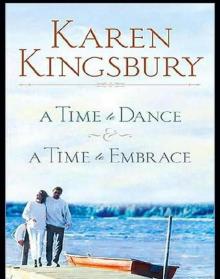 A Time to Dance
A Time to Dance Remember Tuesday Morning
Remember Tuesday Morning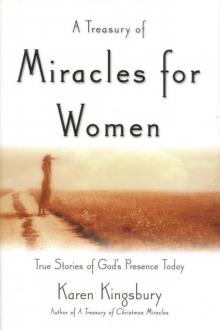 A Treasury of Miracles for Women
A Treasury of Miracles for Women Like Dandelion Dust
Like Dandelion Dust Brush of Wings
Brush of Wings The Tuesday Morning Collection
The Tuesday Morning Collection A Moment of Weakness
A Moment of Weakness Ever After
Ever After This Side of Heaven
This Side of Heaven Unlocked: A Love Story
Unlocked: A Love Story Take One
Take One The Red Gloves Collection
The Red Gloves Collection To the Moon and Back
To the Moon and Back Just Beyond the Clouds
Just Beyond the Clouds Oceans Apart
Oceans Apart A Baxter Family Christmas
A Baxter Family Christmas Fame
Fame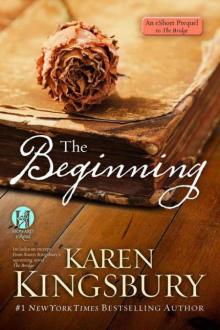 The Beginning
The Beginning On Every Side
On Every Side Gideon's Gift
Gideon's Gift Forgiven
Forgiven A Kingsbury Collection
A Kingsbury Collection Found
Found Family
Family One Tuesday Morning
One Tuesday Morning Someday
Someday Take Three
Take Three Beyond Tuesday Morning
Beyond Tuesday Morning Unlocked
Unlocked Take Four
Take Four Never Grow Up
Never Grow Up Where Yesterday Lives
Where Yesterday Lives Two Weeks
Two Weeks When Joy Came to Stay
When Joy Came to Stay Halfway to Forever
Halfway to Forever Best Family Ever
Best Family Ever Sunrise
Sunrise Angels Walking
Angels Walking A Treasury of Miracles for Friends
A Treasury of Miracles for Friends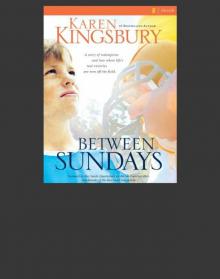 Between Sundays
Between Sundays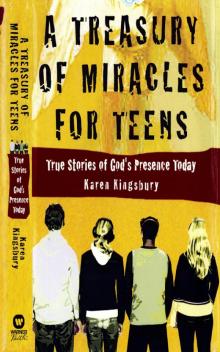 A Treasury of Miracles for Teens
A Treasury of Miracles for Teens A Thousand Tomorrows / Just Beyond the Clouds
A Thousand Tomorrows / Just Beyond the Clouds Finding Home (A Baxter Family Children Story Book 2)
Finding Home (A Baxter Family Children Story Book 2) Waiting for Morning
Waiting for Morning Chasing Sunsets
Chasing Sunsets Two Weeks: A Novel (The Baxter Family)
Two Weeks: A Novel (The Baxter Family) Coming Home
Coming Home Final Vows
Final Vows Sunset
Sunset Even Now
Even Now Fifteen Minutes: A Novel
Fifteen Minutes: A Novel Love Story
Love Story The Bridge: A Novel
The Bridge: A Novel One Tuesday Morning & Beyond Tuesday Morning Compilation
One Tuesday Morning & Beyond Tuesday Morning Compilation Truly, Madly, Deeply
Truly, Madly, Deeply The Chance: A Novel
The Chance: A Novel A Brush of Wings
A Brush of Wings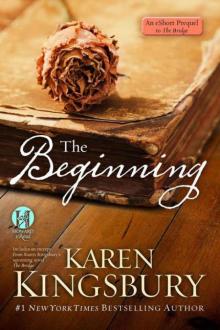 The Beginning: An eShort Prequel to the Bridge
The Beginning: An eShort Prequel to the Bridge A Thousand Tomorrows & Just Beyond The Clouds Omnibus
A Thousand Tomorrows & Just Beyond The Clouds Omnibus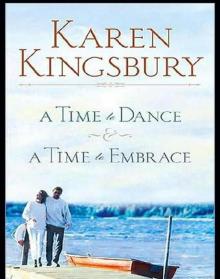 A Time to Dance/A Time to Embrace
A Time to Dance/A Time to Embrace In This Moment
In This Moment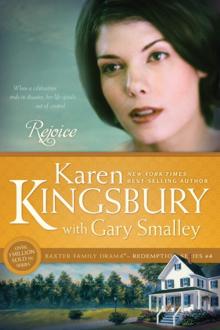 Rejoice
Rejoice Coming Home: A Story of Undying Hope
Coming Home: A Story of Undying Hope